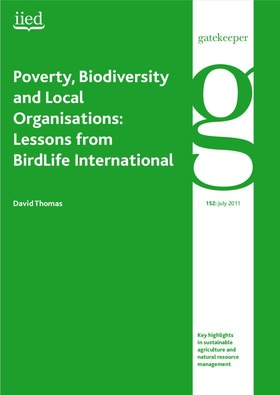Poverty, Biodiversity and Local Organisations: Lessons from BirdLife International
Global targets to reduce the rate of biodiversity loss significantly by 2010 have not been met, and the rate of biodiversity loss does not appear to be slowing. At the same time, targets to reduce human poverty worldwide are also off track. This dual challenge has led to a search for effective mechanisms and entry points through which conservation and development objectives can be addressed together. Both conservation and development sectors, within their own sphere of interest, have advocated the importance of local participation and also of partnership between conservation agencies and local people. This paper discusses why working with local organisations can be an important entry point for conservation and poverty reduction, describes the global experience of BirdLife International in this context, and concludes with a discussion, based on BirdLife’s experience, of some of the issues and constraints which need to be taken into account when addressing conservation and poverty reduction through working with local organisations.
Three examples, one from South America (Bolivia) one from Africa (Uganda) and one from Asia (Nepal), help to illustrate how BirdLife’s partners have worked with local organisations as an entry point to achieving conservation and poverty reduction. These examples, and BirdLife International’s very rich experience in this approach worldwide, reveal that working in partnership with local organisations ensures that environment and poverty are addressed in a more holistic way, as experienced and understood by local people. It also has benefits in terms of sustainability, efficiency, legitimacy and respect for rights. However, it needs to~be part of a broader strategy, particularly one which addresses drivers and root causes of poverty and biodiversity loss at larger scales. Linking local organisations to national and international networks can help to ensure that local voices are heard in such forums.
Cite this publication
Available at https://www.iied.org/14614iied



